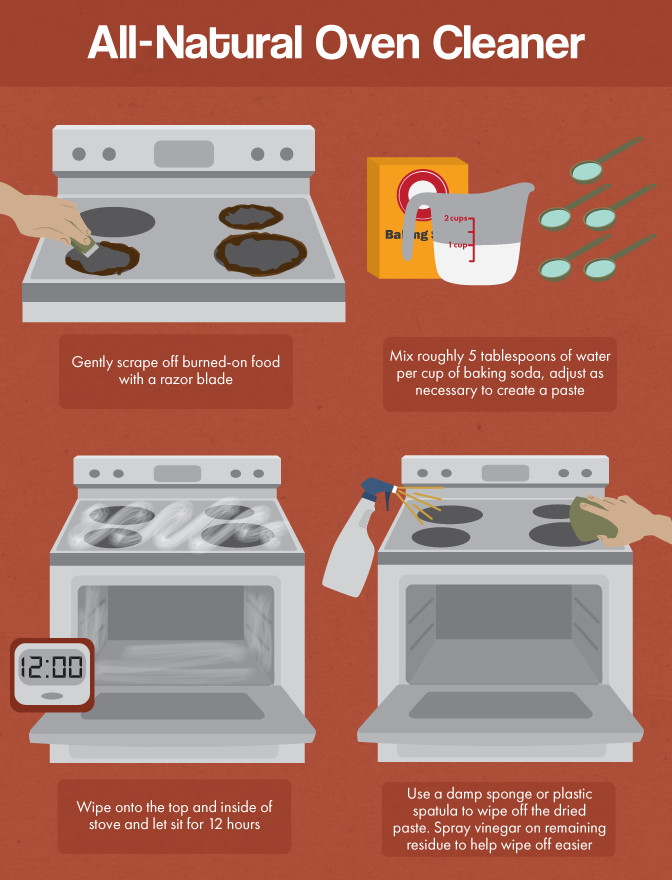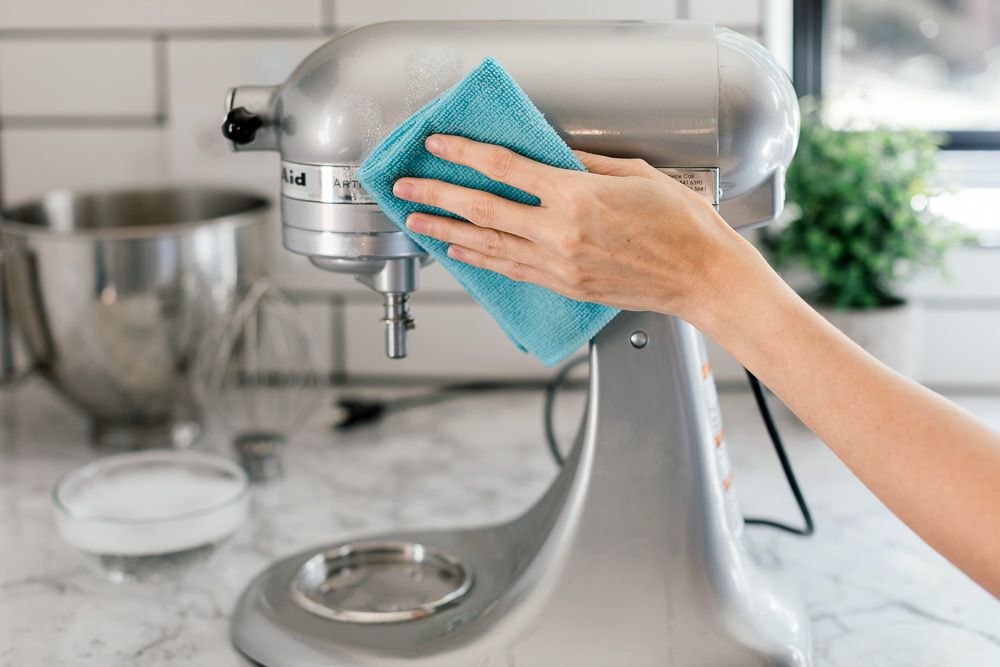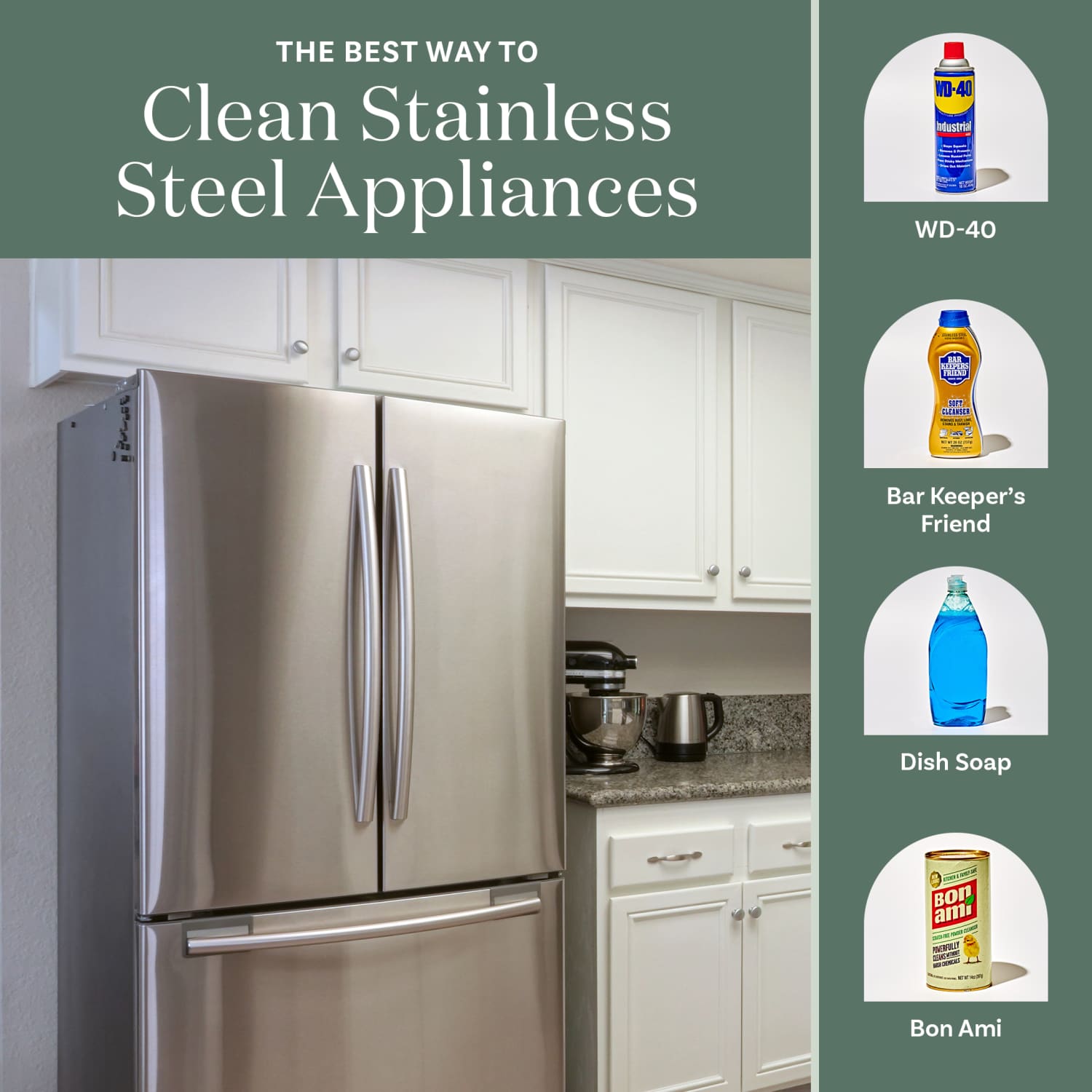
Are you tired of spending hours scrubbing away at greasy stovetops and dirty ovens? Do you want your kitchen appliances to shine like new? Look no further! In this article, you will discover a range of effective tips and tricks for maintaining the cleanliness of your kitchen appliances. From simple daily habits to deep cleaning techniques, we’ve got you covered. Say goodbye to stubborn stains and hello to a spotless kitchen!
1. Regular Cleaning Schedule
Maintaining a regular cleaning schedule for your kitchen appliances is essential to ensure their longevity and efficiency. By incorporating daily, weekly, and monthly cleaning tasks into your routine, you can keep your appliances in excellent condition for years to come.
1.1 Daily Cleaning
When it comes to daily cleaning, a few simple tasks can go a long way in keeping your kitchen appliances spotless. Start by wiping down the exterior surfaces of your appliances with a damp cloth to remove any fingerprints or smudges. Additionally, make it a habit to quickly clean up any spills or food residue that may have accumulated on the appliances throughout the day.
1.2 Weekly Cleaning
On a weekly basis, set aside some time for more thorough cleaning of your kitchen appliances. This includes cleaning the interiors of your refrigerator and microwave, as well as wiping down the surfaces of your oven and dishwasher. By dedicating a specific day or time each week for this task, you can maintain a clean and hygienic kitchen environment.
1.3 Monthly Cleaning
Once a month, it is important to deep clean your kitchen appliances to remove any buildup or grime that may have accumulated over time. This includes thoroughly cleaning the coils and vents of your refrigerator, scrubbing the oven racks, descaling your coffee maker, and cleaning the filter and spray arms of your dishwasher. By following a monthly cleaning routine, you can prevent the accumulation of dirt and debris, ensuring that your appliances continue to function optimally.

This image is property of cdn.apartmenttherapy.info.
2. Cleaning Specific Kitchen Appliances
Different kitchen appliances require specific cleaning techniques to ensure their cleanliness and proper functioning. Let’s explore the cleaning methods for some common kitchen appliances:
2.1 Refrigerator
To clean your refrigerator, start by removing all the food items and shelves. Wipe down the interior surfaces with a mild detergent solution or a mixture of vinegar and water. Pay special attention to the corners and crevices, where spills and residue tend to accumulate. Clean the refrigerator shelves and drawers separately and ensure they are completely dry before placing them back. Don’t forget to clean the exterior surfaces as well.
2.2 Oven
Cleaning your oven may seem like a daunting task, but with the right approach, it can be a breeze. Start by removing the oven racks and soaking them in warm soapy water. While they are soaking, wipe down the interior of the oven, including the walls and bottom, with a mixture of baking soda and water. Let the baking soda paste sit for a while to loosen any baked-on grime. Finally, scrub off the residue and rinse the interior thoroughly. Once the oven racks are dry, place them back into the oven.
2.3 Microwave
Cleaning a microwave is relatively simple yet crucial for maintaining its cleanliness. Start by placing a microwave-safe bowl filled with water and a few slices of lemon or a tablespoon of vinegar inside the microwave. Heat the mixture for a few minutes until it starts to steam. The steam will help loosen any food particles or stains. Then, carefully remove the bowl and wipe down the interior surfaces with a damp cloth or sponge. Pay attention to the turntable and the inner sides of the microwave door. Finish by thoroughly drying the interior with a clean cloth.
2.4 Dishwasher
It’s necessary to clean your dishwasher regularly to prevent the buildup of food particles and residue that can affect its performance. Begin by removing the bottom rack and checking the dishwasher drain for any debris. Clean the filter and spray arms using warm soapy water to remove any clogs or buildup. Wipe down the interior of the dishwasher with a damp cloth, paying attention to the door seal and edges where bacteria can accumulate. Run a dishwasher cleaner or a mixture of vinegar and baking soda through a cycle to remove any remaining buildup.
2.5 Coffee Maker
Maintaining the cleanliness of your coffee maker is crucial for the quality of your daily brew. Start by removing any used coffee grounds and washing the removable parts, such as the carafe, filter basket, and water reservoir, with warm soapy water. Remove any mineral deposits or coffee stains by soaking the parts in a mixture of equal parts vinegar and water. Run a brewing cycle using only water to flush out any remaining residue. Finally, rinse all the parts thoroughly and dry them before reassembling the coffee maker.

This image is property of www.redfin.com.
3. General Cleaning Tips
To ensure effective and safe cleaning of your kitchen appliances, follow these general tips:
3.1 Use Proper Cleaning Products
Always refer to the manufacturer’s instructions for recommended cleaning products. Avoid using harsh chemicals or abrasive scrubbers that may damage the appliances’ surfaces. Opt for mild detergents, baking soda, vinegar, or specialized cleaning products designed for specific appliances.
3.2 Clean the Exterior
Regularly wipe down the exterior surfaces of your appliances to remove fingerprints, grease, and other dirt. Use a soft cloth or sponge and a mild cleaning solution. Avoid using abrasive cleaners that may scratch the surface.
3.3 Clean the Interior
Prioritize the cleaning of appliance interiors to maintain their functionality and hygiene. Remove all food items or utensils before cleaning the interior surfaces. Use appropriate cleaning methods, such as wiping, scrubbing, or soaking, depending on the appliance. Ensure thorough drying to prevent the growth of mold or mildew.
3.4 Pay Attention to Detail
When cleaning your kitchen appliances, pay attention to the often-overlooked details. Clean hard-to-reach areas, corners, and crevices where dirt and grime tend to accumulate. Use a toothbrush or a small brush to clean tight spaces. Regularly check and clean rubber seals, gaskets, and hinges to prevent the growth of mold and maintain a proper seal.

This image is property of www.thespruce.com.
4. Preventive Measures
Apart from regular cleaning, taking preventive measures can significantly contribute to the cleanliness and longevity of your kitchen appliances. Here are some helpful tips:
4.1 Cover and Store Food Properly
To avoid spills, stains, and unpleasant odors inside your appliances, cover and store food properly. Use airtight containers or wrapping materials to keep food fresh and prevent leaks. By doing so, you will reduce the chances of food residue buildup and make cleaning easier.
4.2 Avoid Overfilling Appliances
Overfilling appliances like the refrigerator, oven, or dishwasher can hinder their efficiency and cleanliness. Follow the manufacturer’s guidelines and recommendations regarding the maximum capacity and load sizes for each appliance. Avoid cramming too much food into the refrigerator or stacking dishes too tightly in the dishwasher, as this can impede proper airflow and cleaning performance.
4.3 Clean Spills Immediately
Accidental spills or food drips are inevitable in the kitchen. However, it is crucial to clean them up immediately to prevent stains, odors, and bacterial growth. When a spill occurs, wipe it up promptly using a clean cloth or paper towel. For stubborn spills, use appropriate cleaning methods and products to ensure thorough removal.
This image is property of cdn.apartmenttherapy.info.
5. Proper Maintenance
In addition to regular cleaning and preventive measures, proper maintenance of your kitchen appliances is vital to keep them running smoothly. Here are some important maintenance tips:
5.1 Read the Appliance Manual
Each kitchen appliance comes with a user manual that contains valuable information about its maintenance and care. Take the time to read and understand these manuals to ensure you are using and cleaning the appliances correctly. The manual will also provide guidance on troubleshooting common issues and when to seek professional help.
5.2 Regular Inspections and Maintenance
Periodically inspect your kitchen appliances for any signs of wear and tear, damage, or malfunctioning parts. Check for loose or broken seals, damaged cords, or unusual noises. If you notice anything suspicious, contact a professional technician for repair or maintenance. Additionally, follow any recommended maintenance tasks mentioned in the user manual, such as replacing filters or lubricating moving parts.
5.3 Seek Professional Help
If you encounter major issues or complex problems with your kitchen appliances, it is best to seek professional help. Certified technicians have the expertise to diagnose and repair appliance malfunctions effectively. Attempting to fix complex issues on your own may lead to further damage or even safety hazards.
By following these comprehensive tips for maintaining kitchen appliance cleanliness, you can ensure that your appliances not only remain in pristine condition but also operate efficiently and enhance your overall kitchen experience. Remember, a clean and well-maintained kitchen is the heart of a healthy and enjoyable culinary journey.

This image is property of hips.hearstapps.com.



